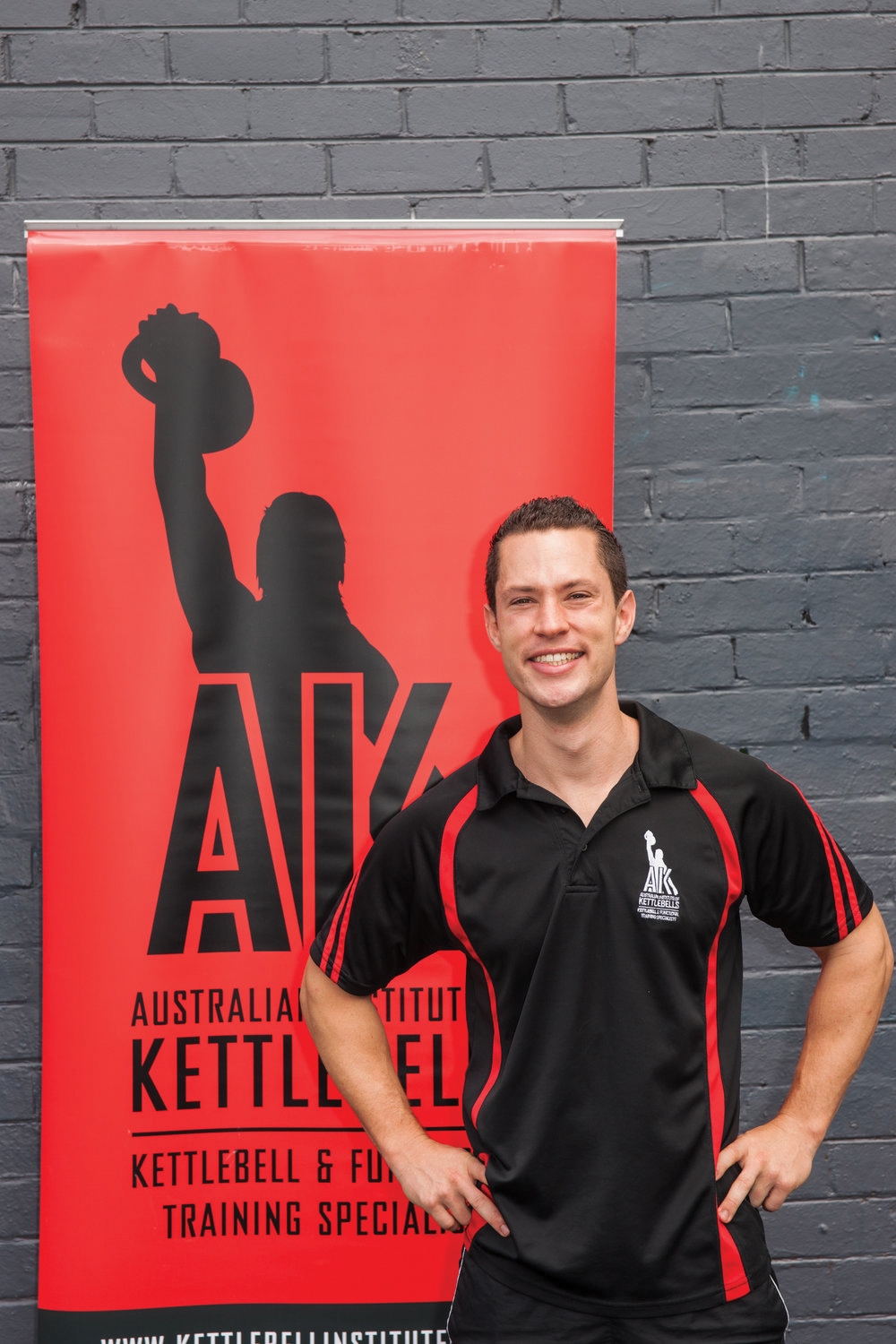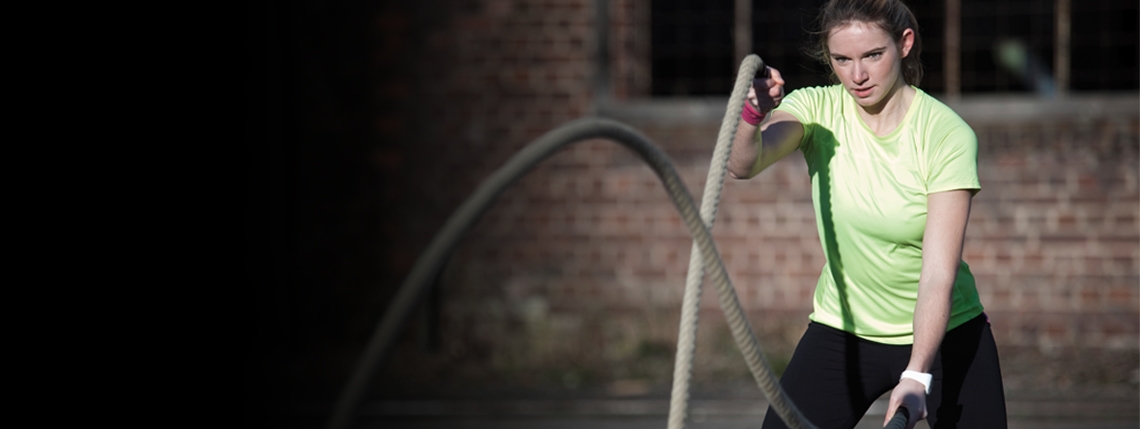The undulating waves of battling ropes certainly look impressive – so how effective is this training method? asks Dan Henderson.
If you’re a trainer, then you’ll be well aware that battling ropes have become an increasingly popular training tool in recent years. They’re now commonplace in commercial gyms and boot camps and are being used by growing numbers of personal trainers. Battling ropes are very simple in design. They are literally ropes made from either a natural fibre, such as manila, or a synthetic material, such as polypropylene or nylon. They can vary in diameter and length, from around 9-15m in length and 3-5cm in thickness. Using the longer and thicker ropes is one way of progressing training difficulty. Longer ropes are ideal for pulling movements, while thicker ropes are advantageous for developing power and grip strength. Most have handles and some also feature a protective sheath to protect against degradation. The rope is looped through a fixed anchor point, and clients or participants hold an equal length of rope in each hand. The rope is then vigorously undulated in a series of waves for a set period of time, generally 10 or 30 seconds, depending on the weight and length of the rope.
The battling ropes training system was developed in the United States by legendary strength and endurance athlete John Brookfield, who is renowned for his unconventional training methods with professional athletes. The inspiration for battling ropes training came to Brookfield when he was waiting at a wharf, staring at a rope tied to a boat. Mesmerised by the wave-like movements of the rope, he sought to replicate them. If you haven’t already trained with battling ropes, then you may at least have been mesmerised watching the wave-like movements of rope training taking place. It certainly looks impressive but is it effective? The answer is a resounding ‘yes’ – if you know how to use them correctly. A study by Drs Charles Fountaine and Brad Schmidt (University of Minnesota and Creighton University, USA) into the metabolic cost of rope training found a number of very favourable outcomes. If you’re wondering whether adding this training technique to your toolbox will be beneficial to your clients, then consider the following points.
Time-efficient metabolic clout
Training with battling ropes elicits impressive metabolic results in a limited time. If you have 10 minutes, then you can still undertake a vigorous workout that trains the whole body. Because it is a relatively new training tool, there haven’t been many studies completed into battling ropes, but the research that has been done confirms what was widely assumed: battling rope training demands more oxygen and elevates excess post-exercise oxygen consumption (EPOC) more than many other forms of traditional training. This makes it highly effective for achieving fat loss, as well as increasing strength, fitness and power – which translates to better athletic performance, a leaner physique and an increased capacity for work.
Versatility
Battling ropes are easily portable, so you can train almost anywhere with them. As long as you have a bit of space, the park, beach or gym can be your playground. Most people simply complete two-handed or alternating waves with battling ropes but there is so much more that can be done. There are over 30 wave-based movements that challenge the upper body, lower body and core in unique ways. There are exercises that are specific for power, aerobic endurance, anaerobic endurance and strength endurance. Exercises can be completed solo or with a partner. In addition to varying the length and diameter of the rope, it is easy to regress or progress battling rope difficulty by changing the location of the body in relation to the anchor point, grip, tempo and the duration of the set.
Posterior chain and core
It may surprise you to learn that battling ropes can benefit the posterior chain and core. They may appear to be an upper-body-dominant tool but this isn’t the case if you use them correctly. The power for the wave-based movements should be initiated through the hip hinge, an action that ignites the hamstrings, glutes and spinal erectors. One of the really unique factors about battling ropes is the force that comes back through the rope. Absorbing this force and maintaining balance is great for core engagement. It is not uncommon to see people new to rope training getting pulled by the rope because they have not yet learned how to absorb the returning force.
Mental fitness
The ability of battling ropes training to push the mind as well as the body is one of the main features of John Brookfield’s training. The first few times you use battling ropes, trying to maintain 20 seconds of movement can feel like an eternity. You need to continually push your mind to conquer the aching muscles and burning lungs so you can increase this time. Indeed, 20 minutes on the battling ropes is possible with mental fortitude. This endurance translates well into any sporting arena. The battling rope offers a low-impact alternative to high-impact activities such as running or jumping. It is great for clients who have any joint issues, as their heart rate can be accelerated with minimal impact on their joints.
Fun and different!
Clients are drawn to battling ropes because their dynamic nature, wide array of exercises and uniqueness make an enjoyable change to traditional training methods. By changing variables such as exercises, duration and rope dimensions, you can use battling ropes with all of your clients and help them reap remarkable results.
A version of this article first appeared in Australian Network magazine. fitnessnetwork.com.au
Author bio

Dan Henderson BA (sport and exercise management) is the co-owner of the Australian Institute of Kettlebells (AIK). AIK educates trainers and coaches worldwide with accredited courses in kettlebells, battling ropes, powerbags, mobility and barbells.







